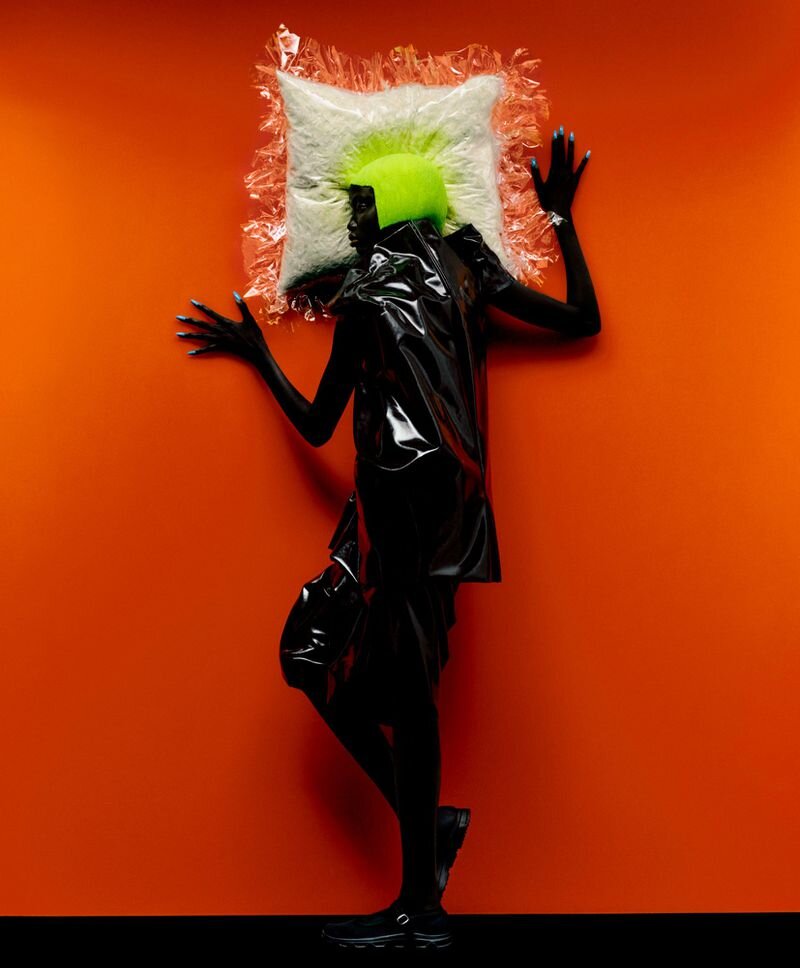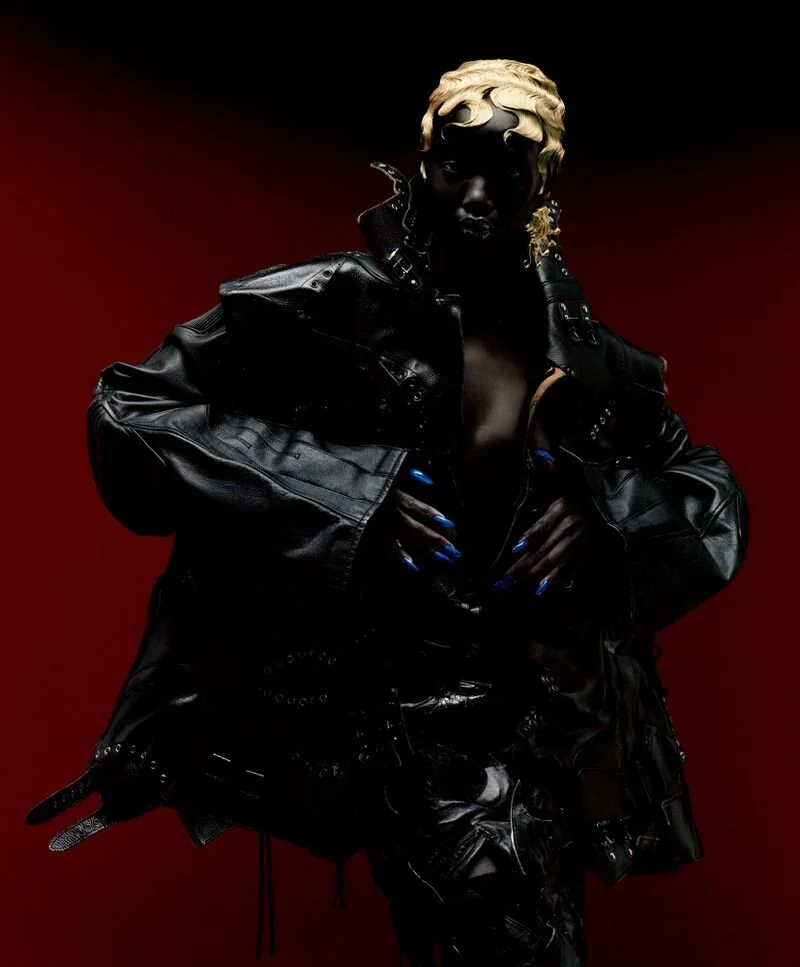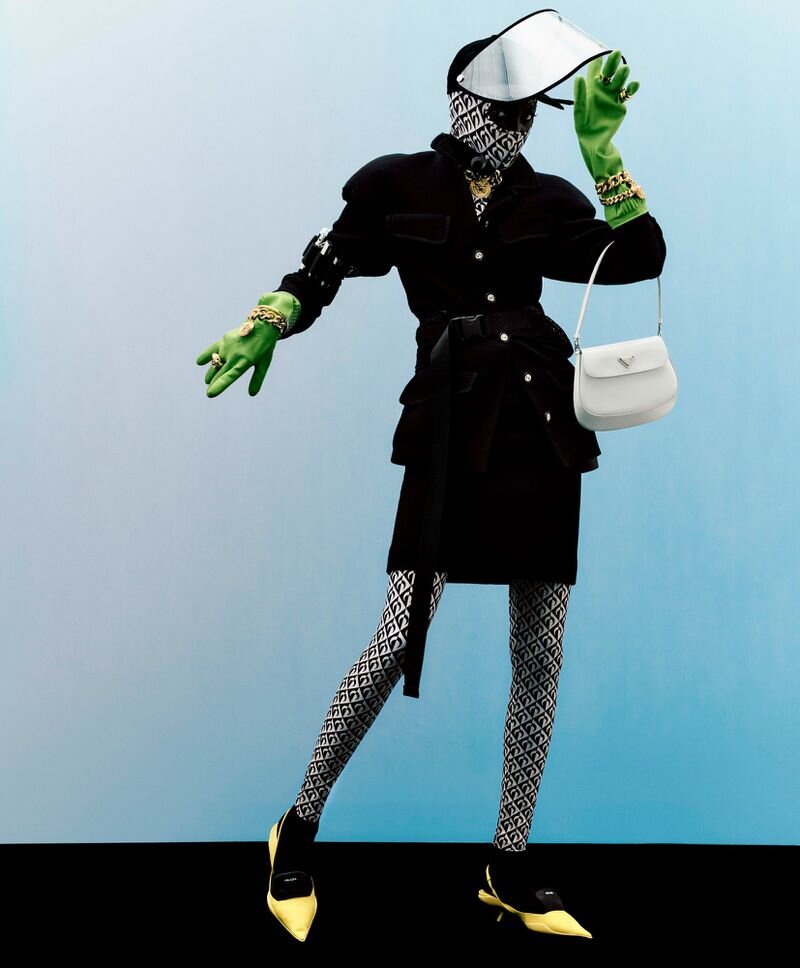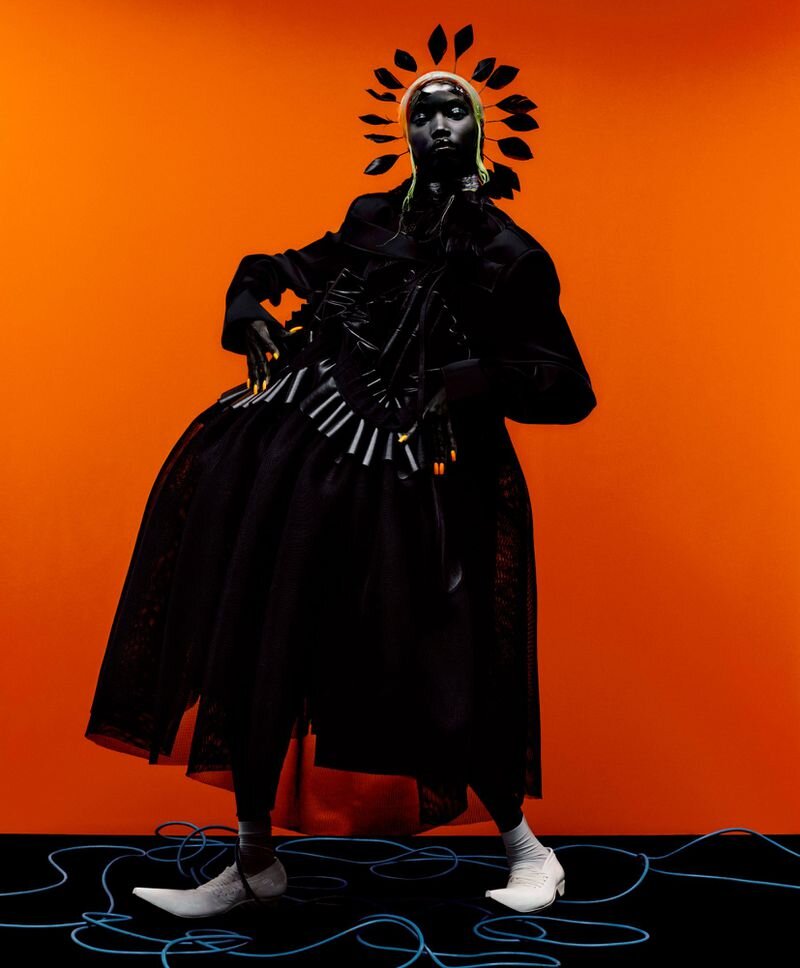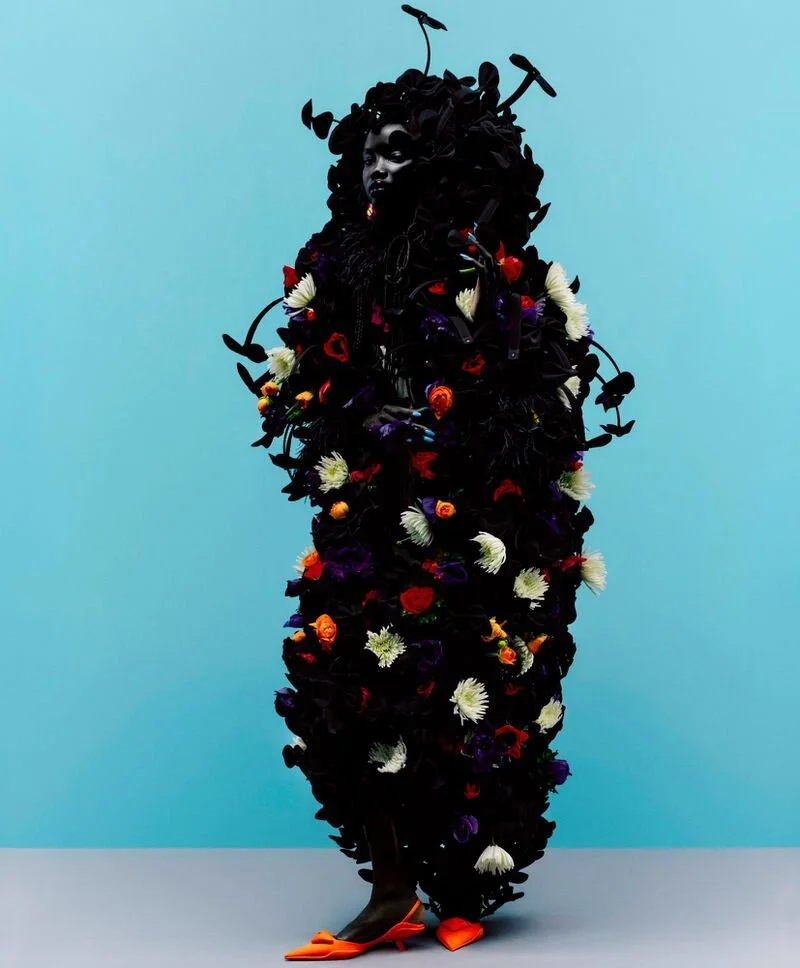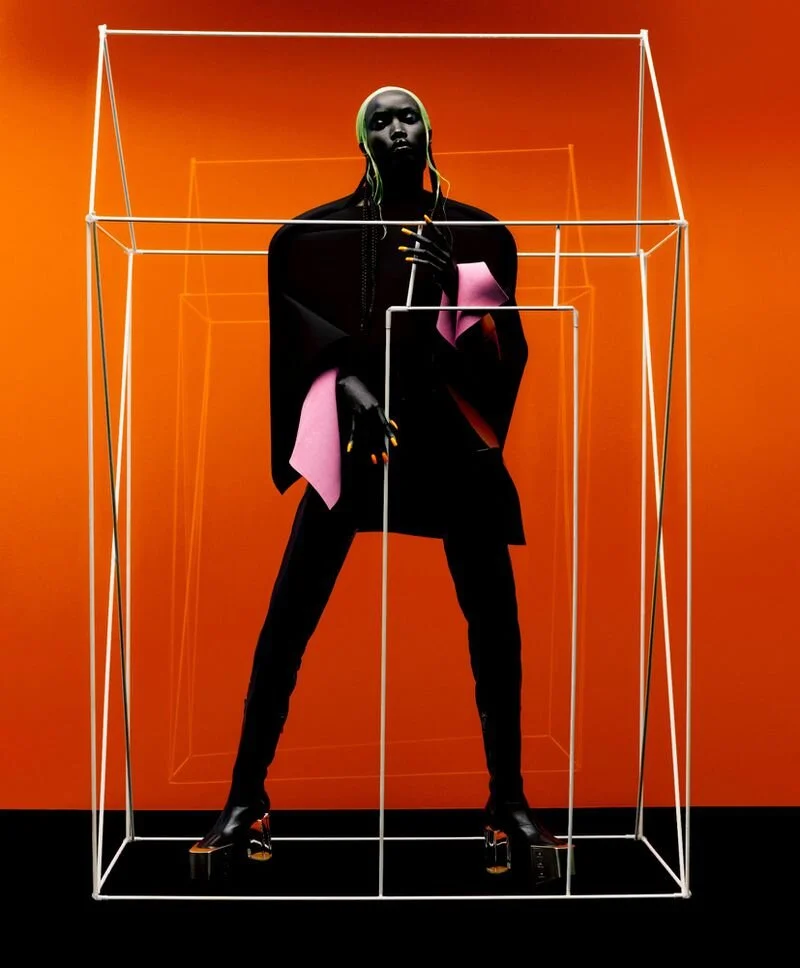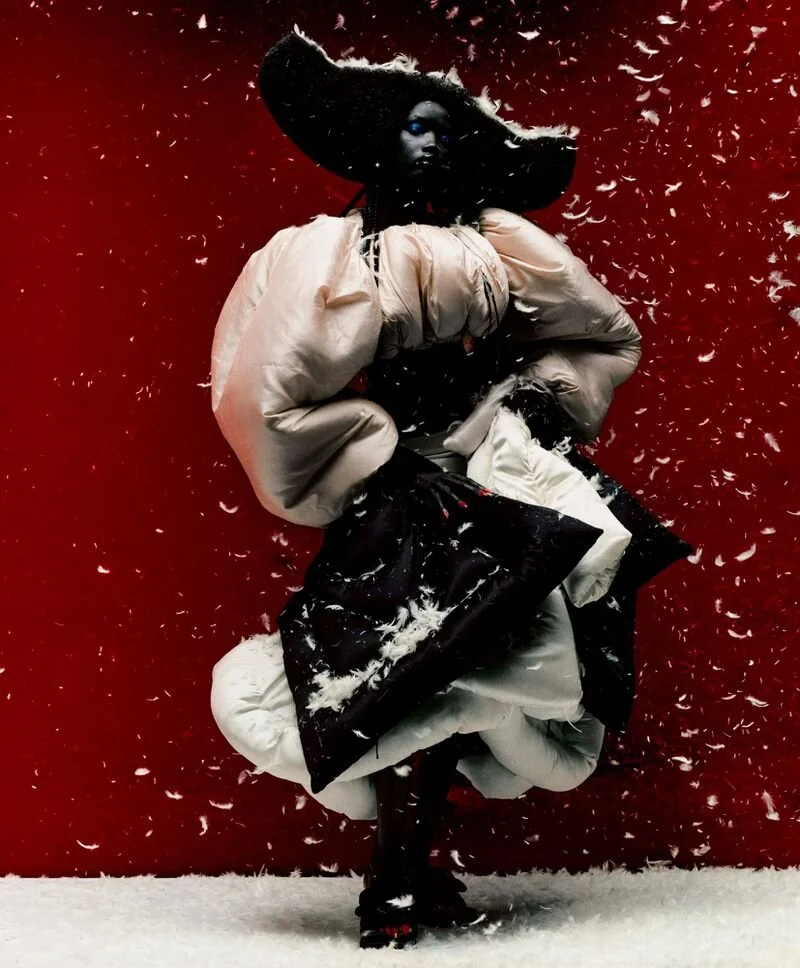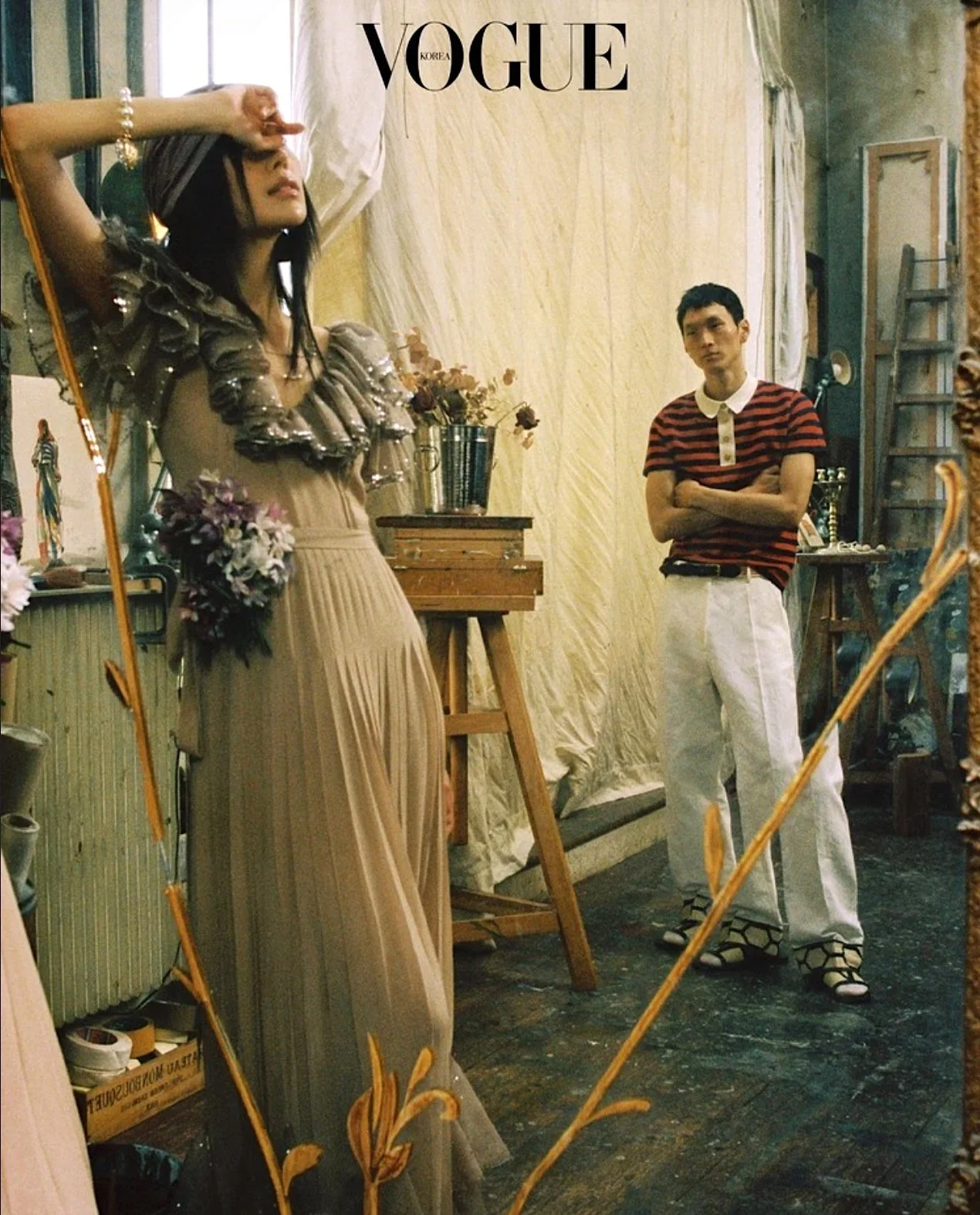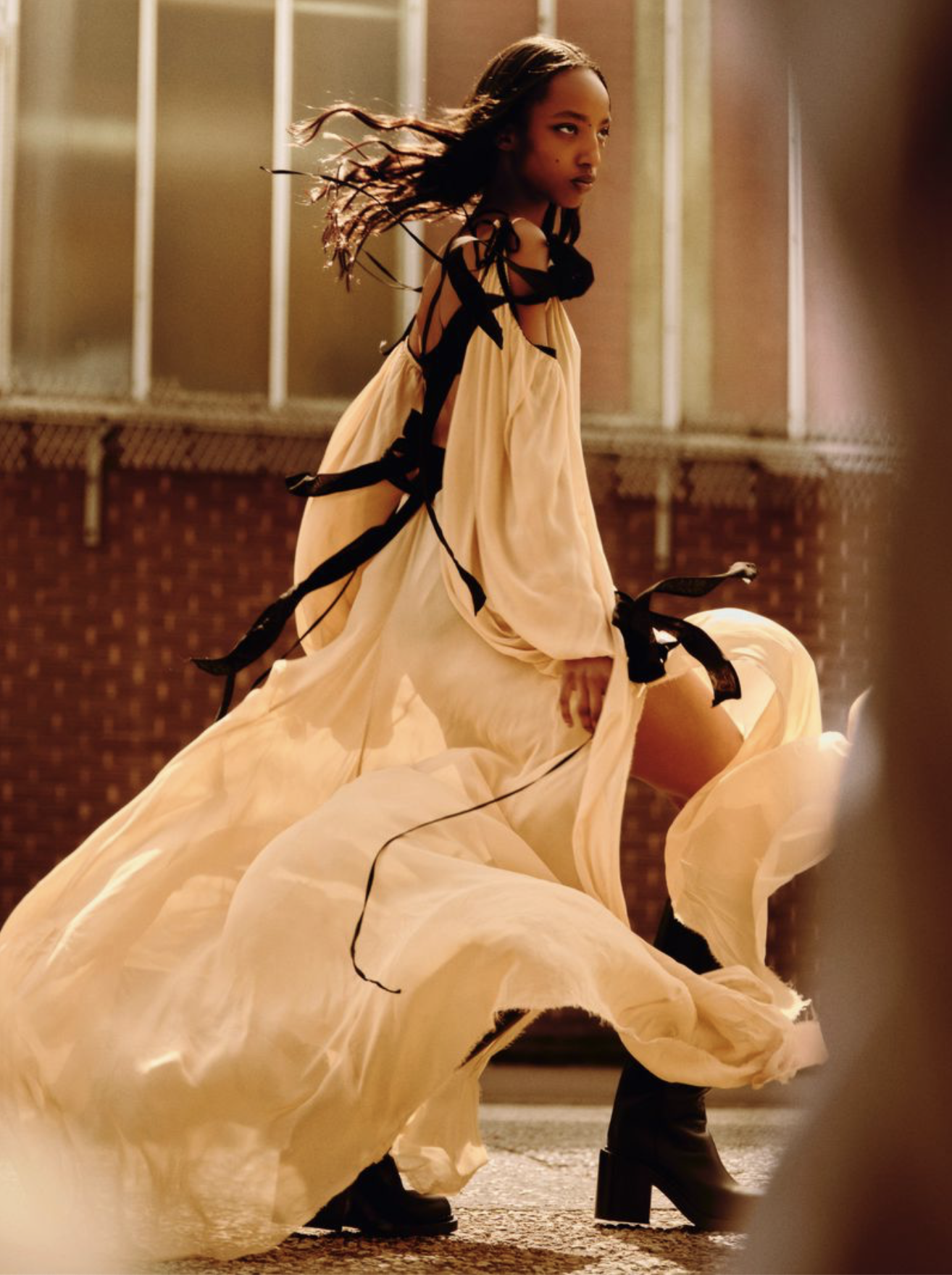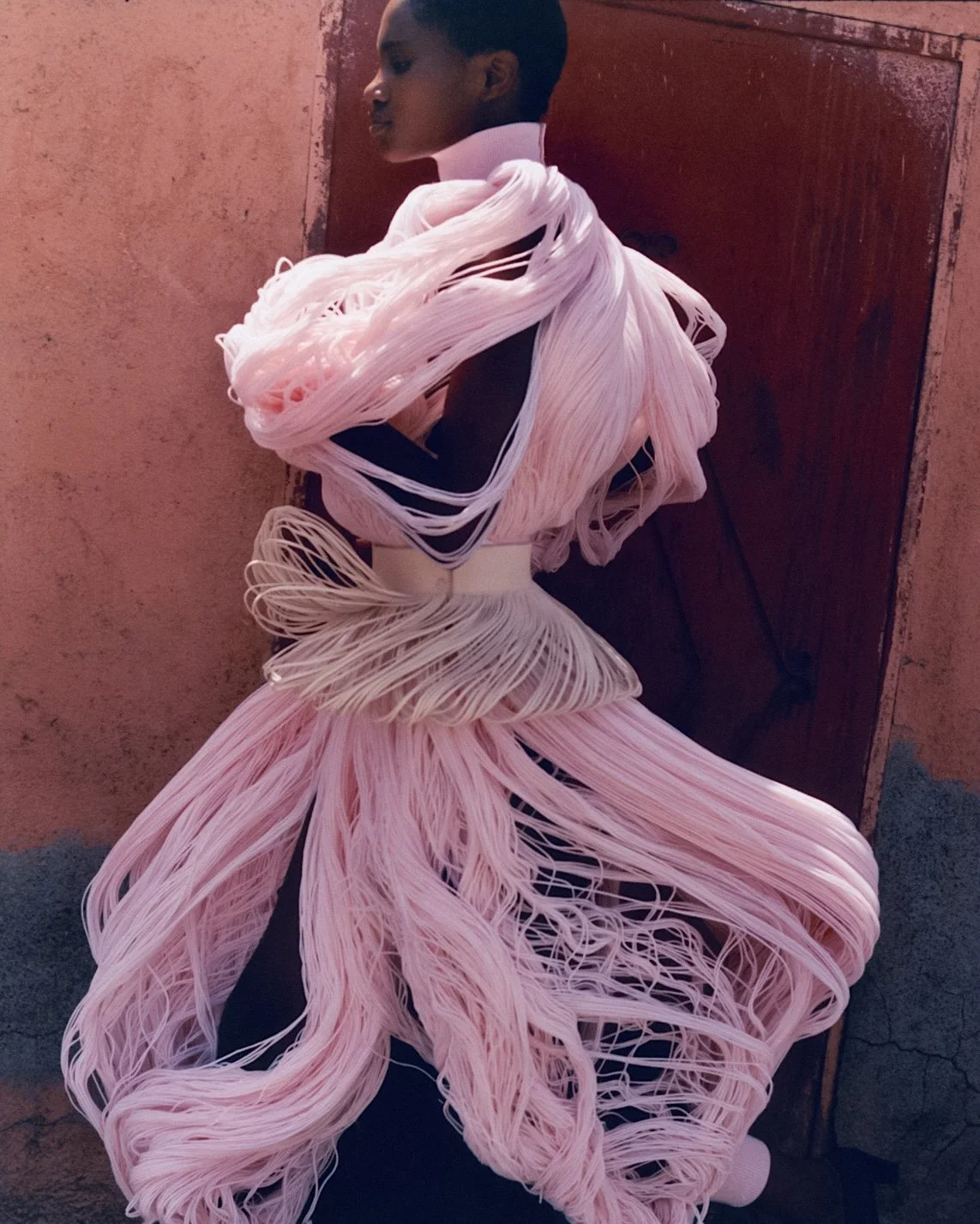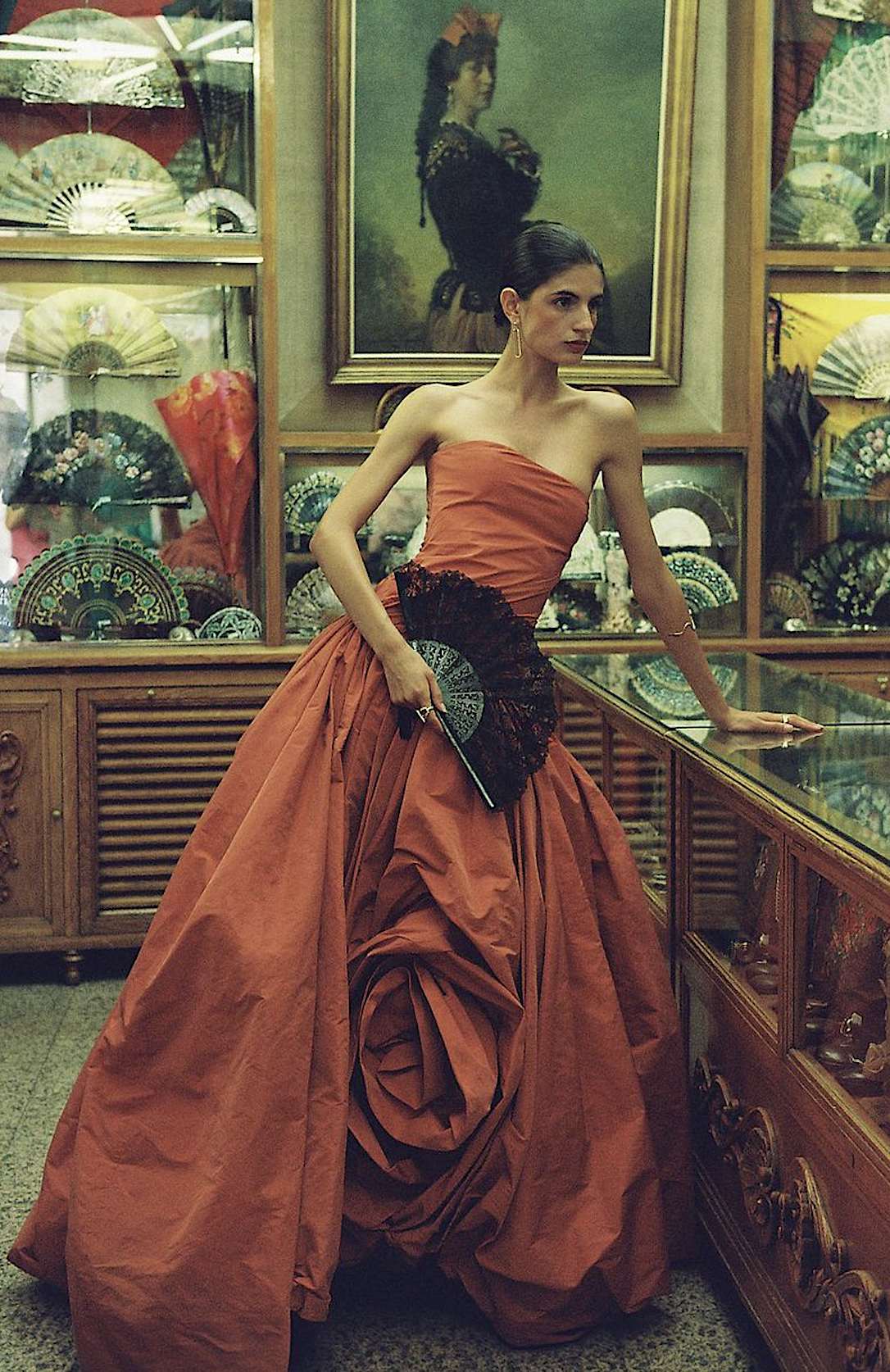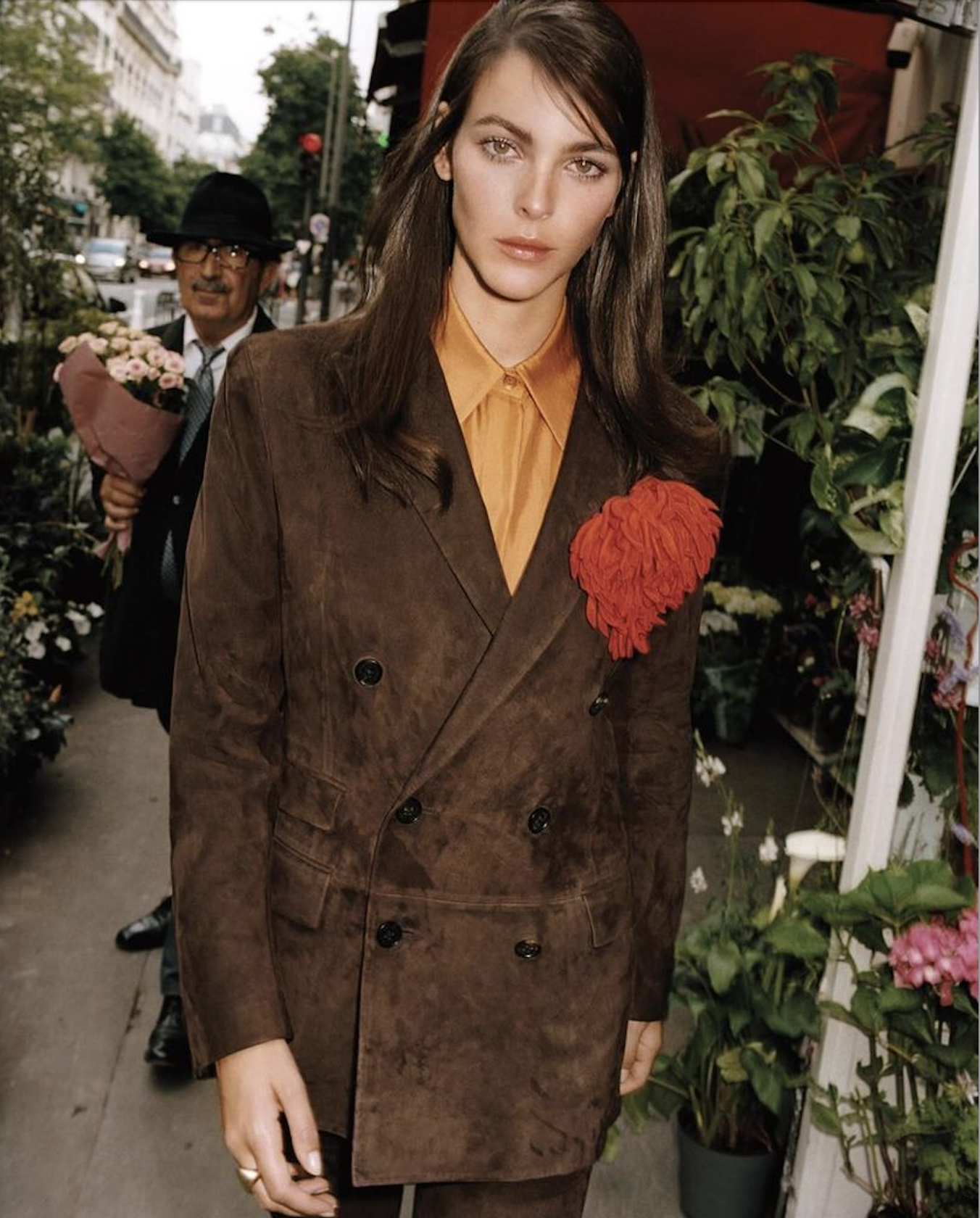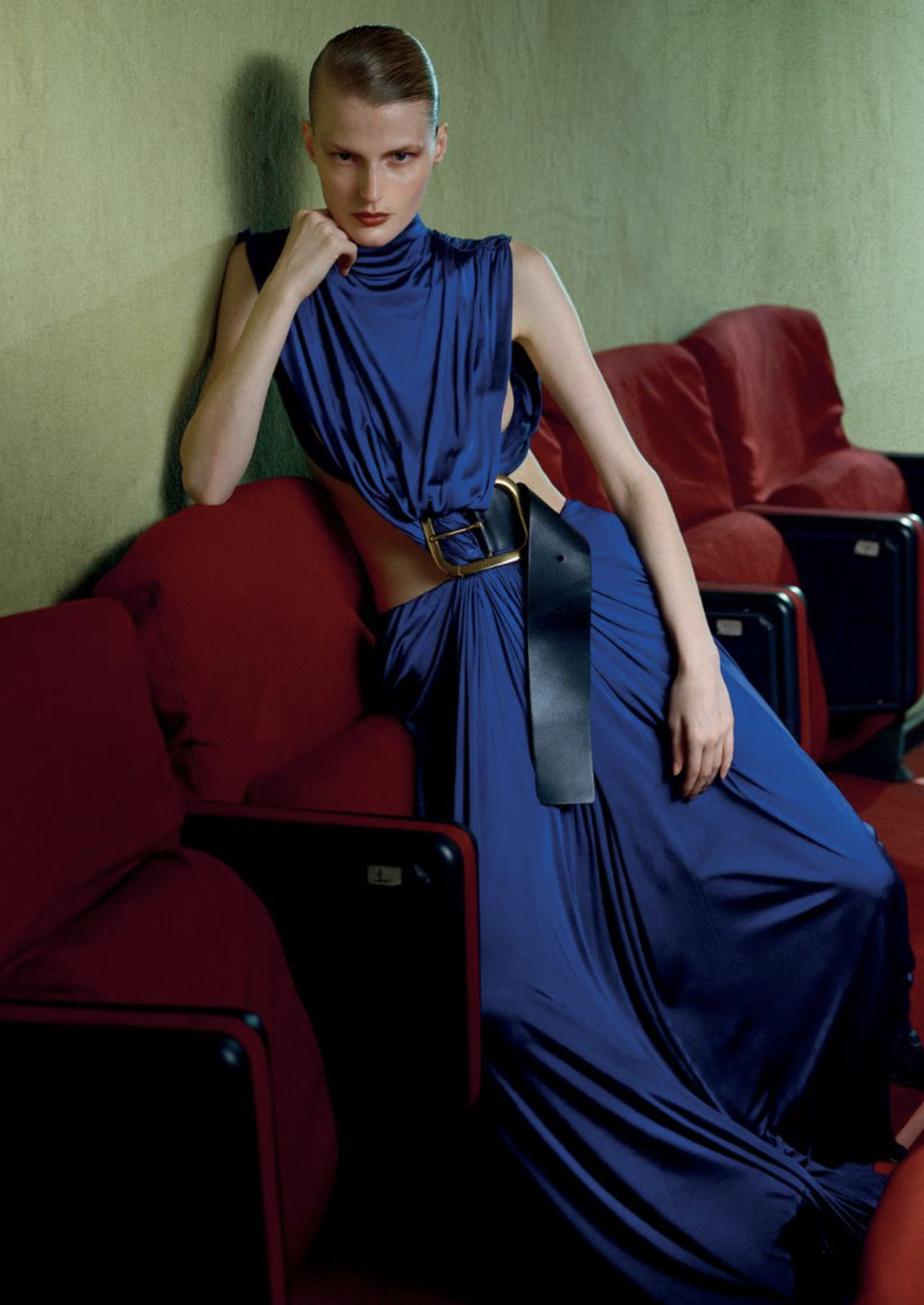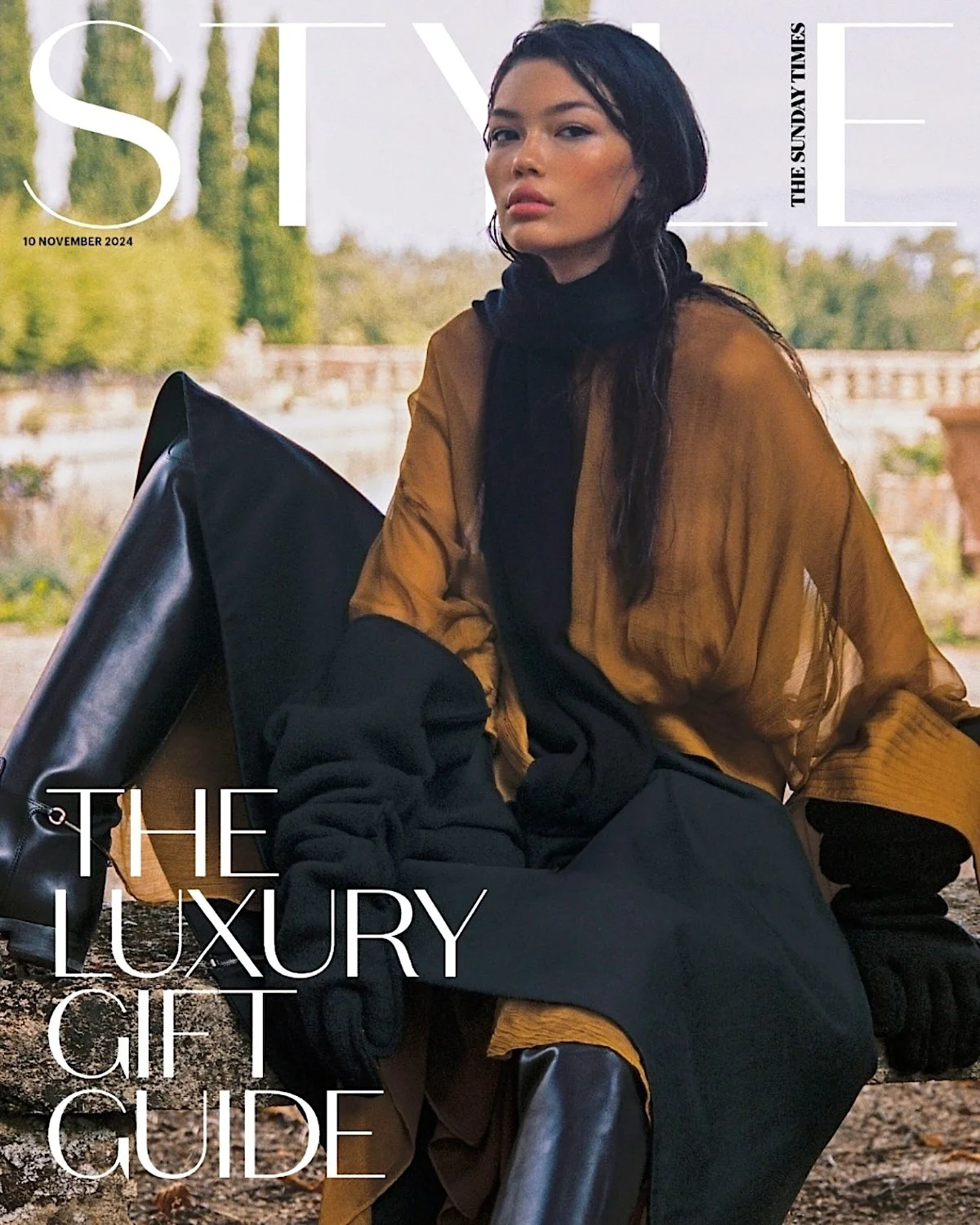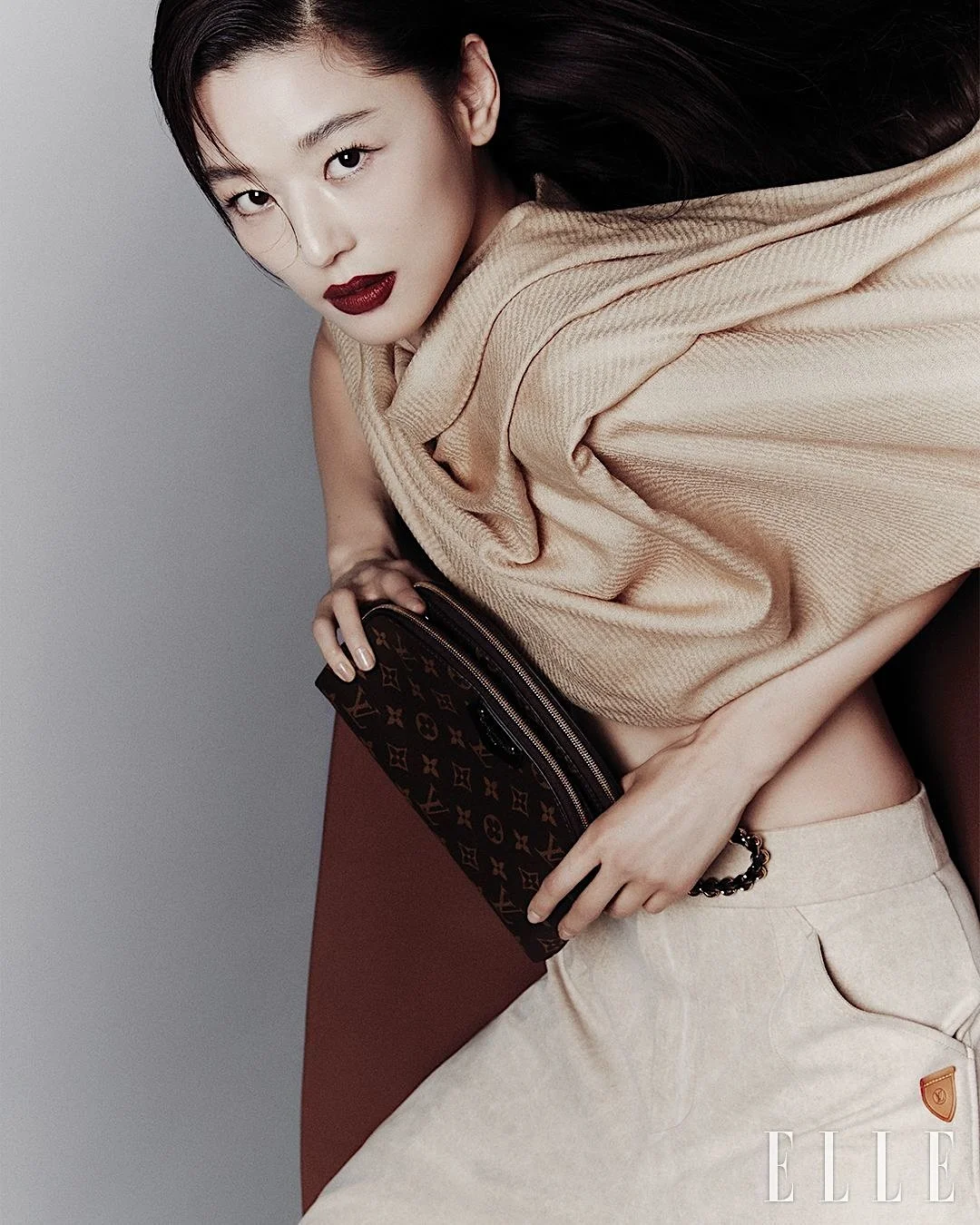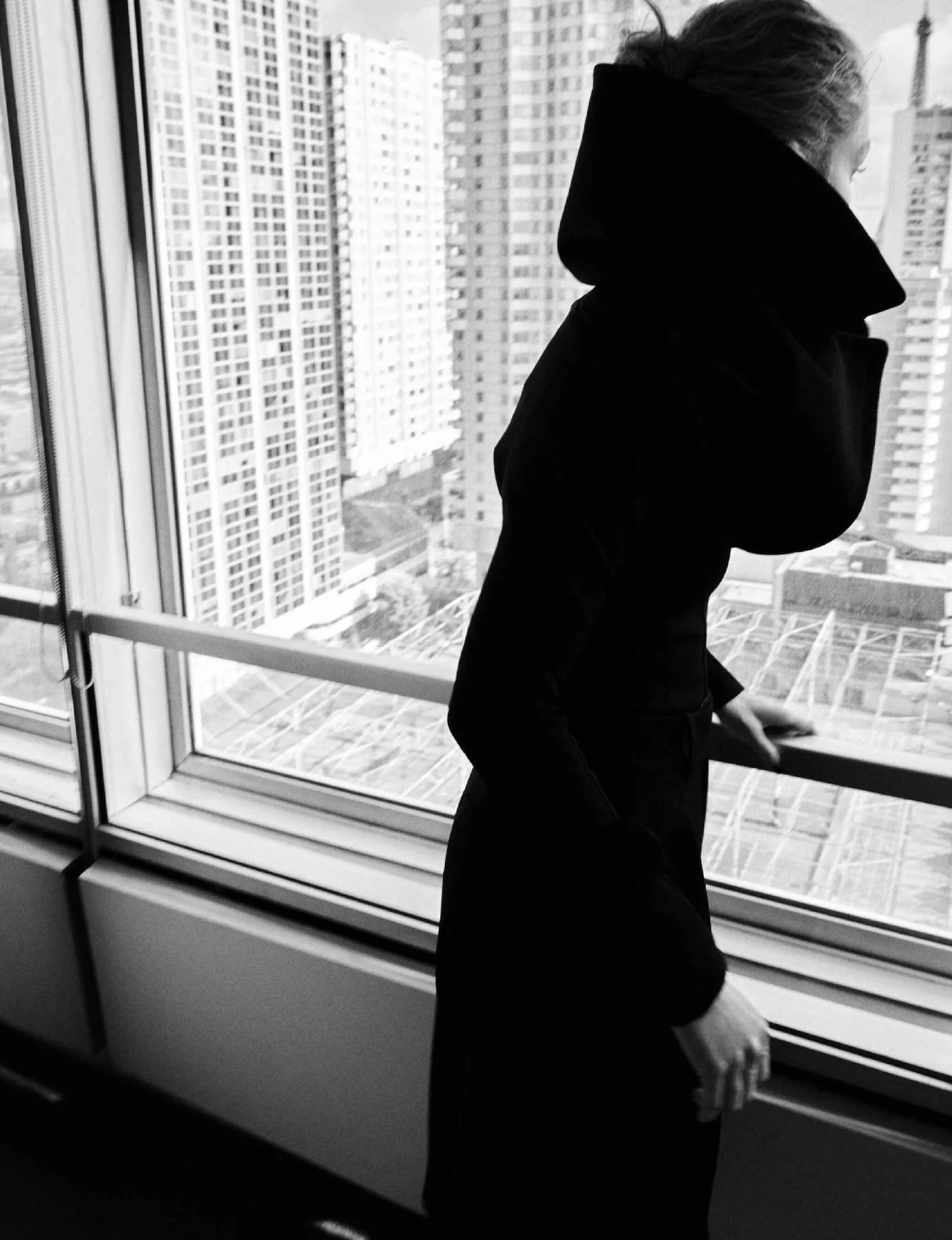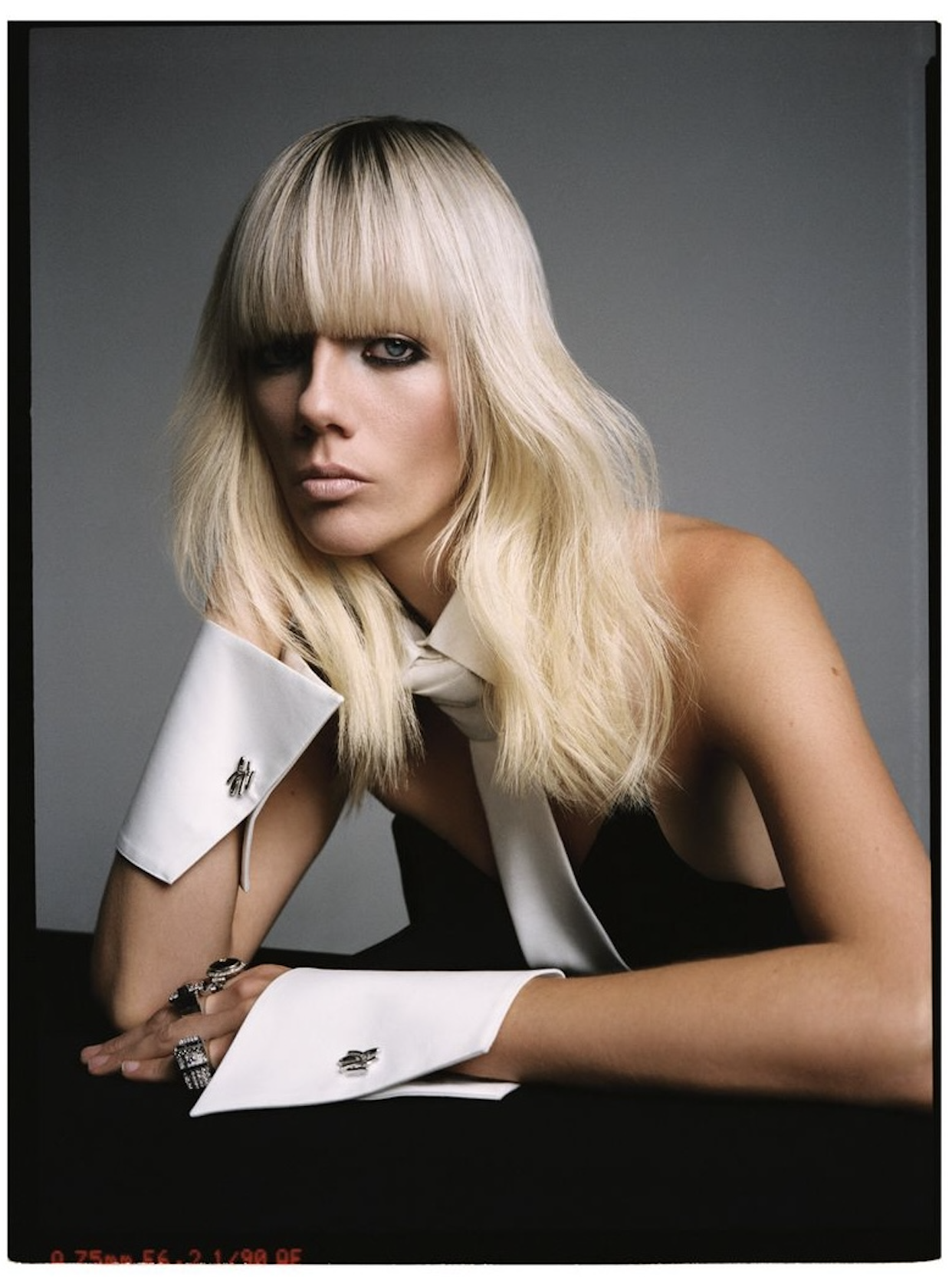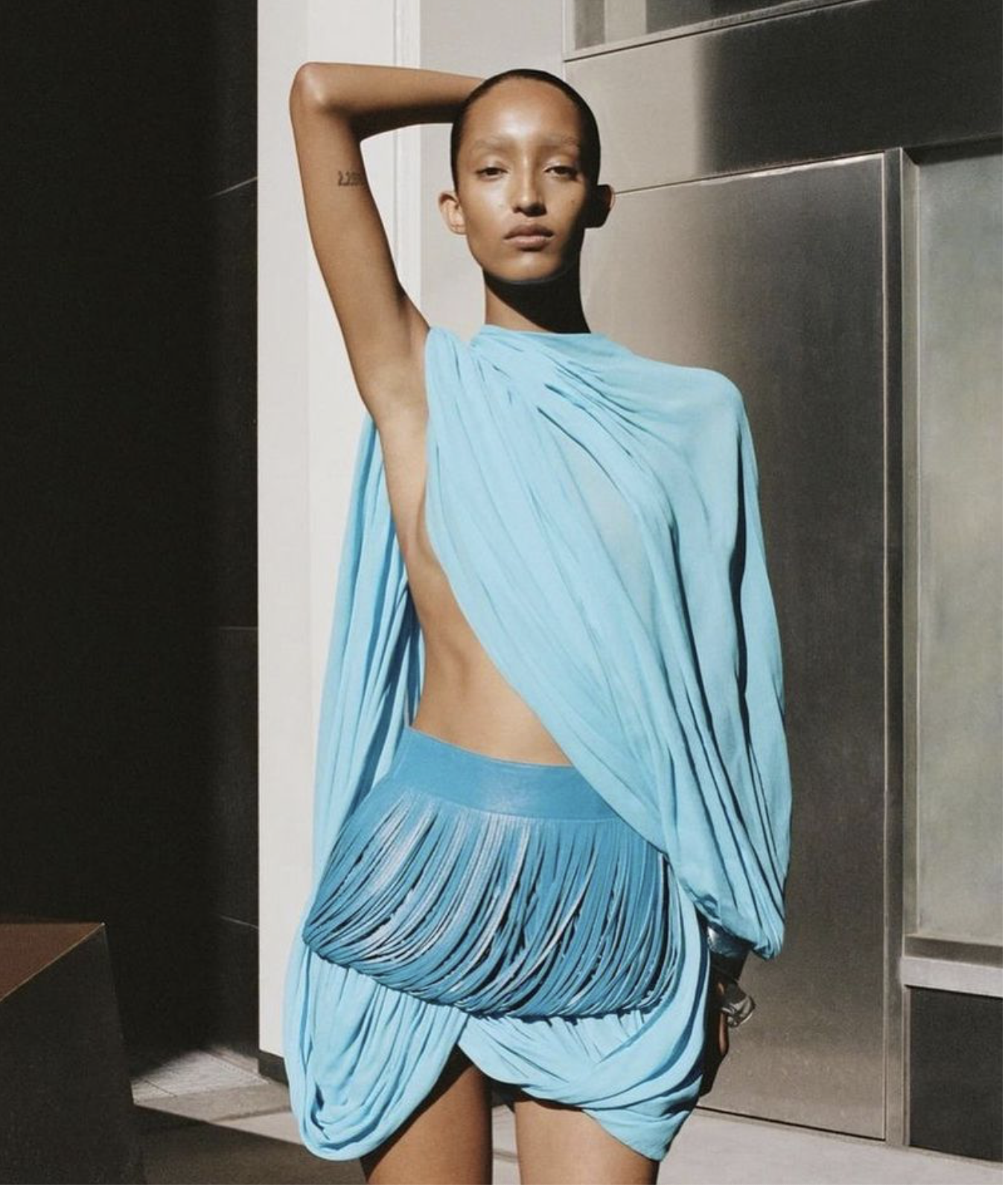Anok Yai In Creative, Protective Layers for T: The New York Times Style Magazine
/Utilitarian, armorlike fashion is not new, but it’s existed primarily as camo-style athleisure or street fashion. In its traditional styling of military-fatigue colorations, AOC understands the 2019 question addressed by Marie Claire in Why My Relationship With Camo Print Is So Messy; and we’ve criticized camo prints in a world where the Kurdish women soldiers are being gunned down by ISIS.
Traditional camo fashion is elitist, and reflects both the industry ‘s and fashionistas’ self-absorbed selves.
The fashion delivered by T: The New York Times Style Magazine February 2021 fashion story ‘For Spring, Protective Layers That Are as Vivid as They Are Joyful’ is very different from past-tense camo or armorlike fashion.
Top model Anok Yai is styled by Jacob K in complex variations of protective layers from Balenciaga, Chanel, Craig Green, Jordan Dalah Studio, Loewe, Melitta Baumeister, Noir Kei Ninomiya. Rick Owens, and more. Rafael Pavarotti [IG] is behind the lens, capturing vivid, joyful distinctive headpieces, puffed-up evening gowns and more fashion abundance.
AOC joins fashion’s large cast of creatives in wanting the COVID-induced global nightmare to end. As an important industry group, we are keen to promote originality and self-expression in new ways.
To underscore, however, how complex design decisions are becoming, my first response to all this high-voltage fashion abundance is wondering if the plastic is biodegradeable. How about the fake bullets? Are all the fake flowers in Noir Kei Ninomiya’s fab dress dead stock or bought new?
Help me, Stella [McCartney]!
Because I adore collage and love ‘messy art, as opposed to clean minimalism, ‘Protective Layers’ is a visual feast for body and mind. It would be easy to say that the looks feel like ‘deadstock’ and that’s meant to be a positive compliment.
But as Chloé creative director Gabriela Hearst, who has used deadstock since her first runway collection for her namesake brand in 2017, reminds us: “Limitations always expose your taste and point of view. . . . Let’s be honest here, repurposed fabric can look like a hot mess. But if it’s done right, you shouldn’t even realize that the fabric hasn’t come straight from a mill.”
Today’s inquiring minds want to know the provenance of all fashion. In particular, clothes that promote themselves as protective shouldn’t be causing extra lawyers of damage to our environment. ~ Anne


